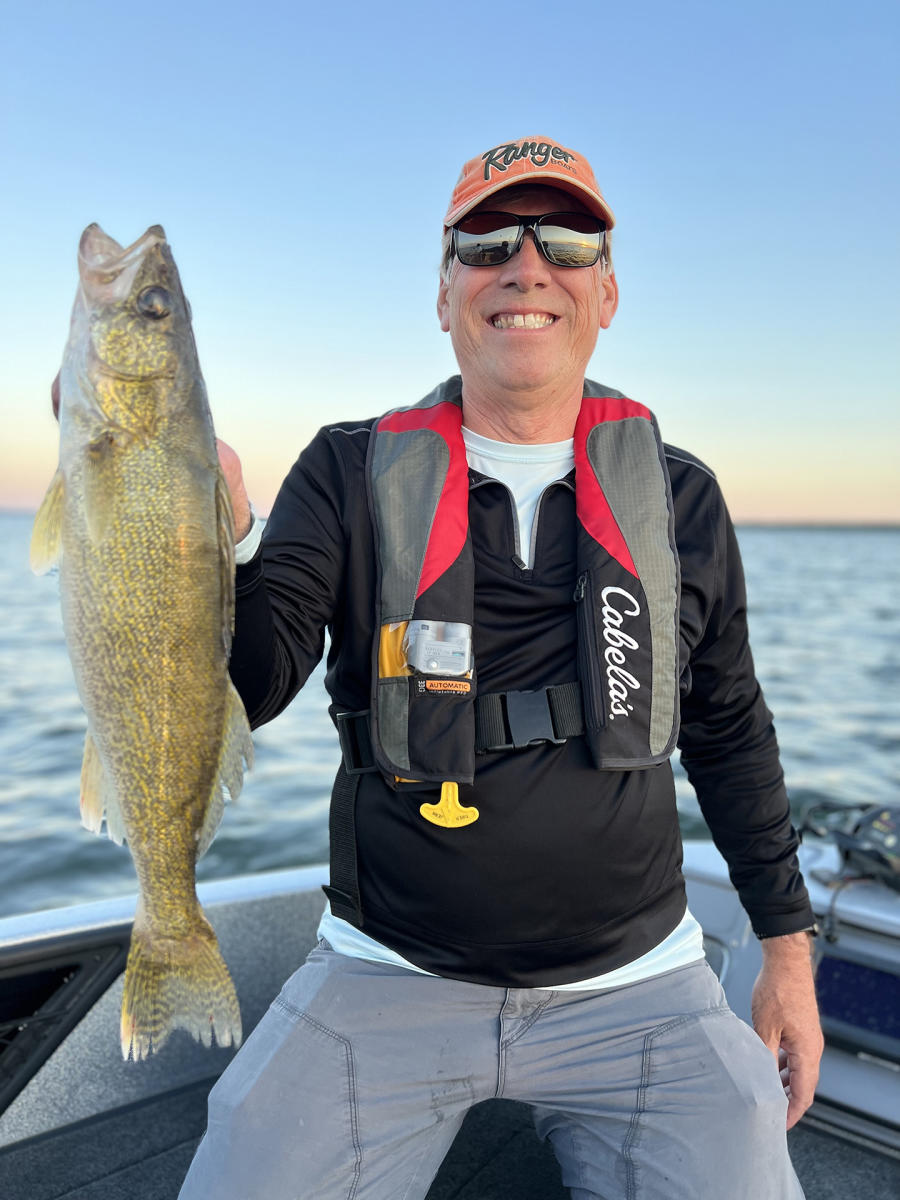
Records are made to be broken! That happened this summer on Devils Lake, North Dakota. This enchanting system of connected big lakes, small lakes and bays proved what local and visiting fishermen already knew.
Walleye populations as tabulated by fisheries net surveys are at all-time highs. Since studying the lake with the same methodology for the past 31 years, never have there been as many walleyes captured in nets. The number, according to fisheries biologist Todd Caspers was 35.3 walleyes per net. The average is 21.5 per net.
Caspers said the 15 to 20 inch “keepers,” the fish people prefer for the table, also set a record at 12.3 per net double the average of 6 per net. These will grow, as will the 10 to 15 inchers, which averaged 16.4 per net, above the average of 10 per net. The trophy sized walleyes, 20 to 30 inches showed up at average counts.
The department’s analysis coincides with reports from those on the lake daily. Tanner Cherney, outdoor media coordinator for the local Chamber/Tourism agency said, “The bite is phenomenal. It’s been solid since spring. The 16 to 17 inch walleyes are extremely healthy. Their fat girth is really impressive.”
Catching walleyes in mid-summer occurs with bottom bouncers and spinners (copper, gold and red and white best). “Change often, preferences change,” Cherney said. “Leadcore trolling with #7 Rapala shallow divers in perch and hot steel colors works throughout the lake.” With the presence of algae, the bite lasts all day long, not just early and late. “Slips and plain hooks on rock piles also account for nice walleyes,” he added.
His favorite method is to select a windy shoreline and with the trolling motor, gently ease along casting jigs or crankbaits. The lake is up four feet and he anticipates it remaining so into winter. He expects the fall bite to remain excellent. With most outdoorsmen duck hunting, the lake is nearly devoid of fishermen as waterfowl seasons progress. “Big fish move shallow, and anglers turn to jigs and minnows or blade baits and Jigging Raps. Lead core trolling is also popular,” Cherney said.
Great summer and fall fishing translates to a good winter bite. “Fishing season never closes. This year, fishing tactics will change, but the record number of walleyes will be waiting.
Winter is the time most touring fishermen chase perch. According to the net surveys, perch were at 15.3 compared to the average of 12. “The numbers of keepers are doing well,” he said, with the 8 to 10 inchers at 5.7 per net (average 3.2); the 10 to 12 inch perch were at 4.1 per net (average 2.4); and the jumbos were at .9 (average .7).
White bass show up all seasons, even under the ice. They were also above average at 7.8 per net (average 5.6). The line stretchers from 15 to 18 inches were at 2.6 per net (average .7). Caspers said the most under-utilized lake fish is the northern pike. The 28 to 44 inch pike are at average. The size-class slightly down, 21 to 28 inches, were 1.1 per net compared to an average of 2 per net.
Cherney said pike are where you find them. He has caught them on deep rock piles, along shorelines, and wherever he has been seeking walleyes.
The best part of Devils Lake fishing is that the entire city and the many shoreline resorts cater to fishermen. They pitch-in and help when troubles flare their ugly heads. They share where fish are being caught. The many guides and guide services ply the waters daily 12 months of the year. They know the walleye “what, where, how, when and why.”
Guide services, resorts, businesses, lodging, casino, access and fish-cleaning stations, community activities, and more are all featured on the website: devilslakend.com. Caspers concluded by saying, “Our perch and walleyes are doing well. Very well.”
